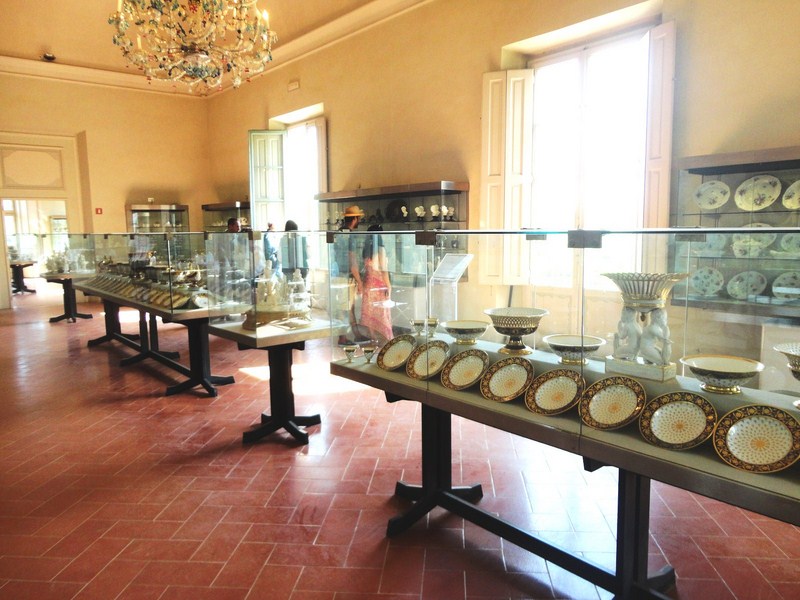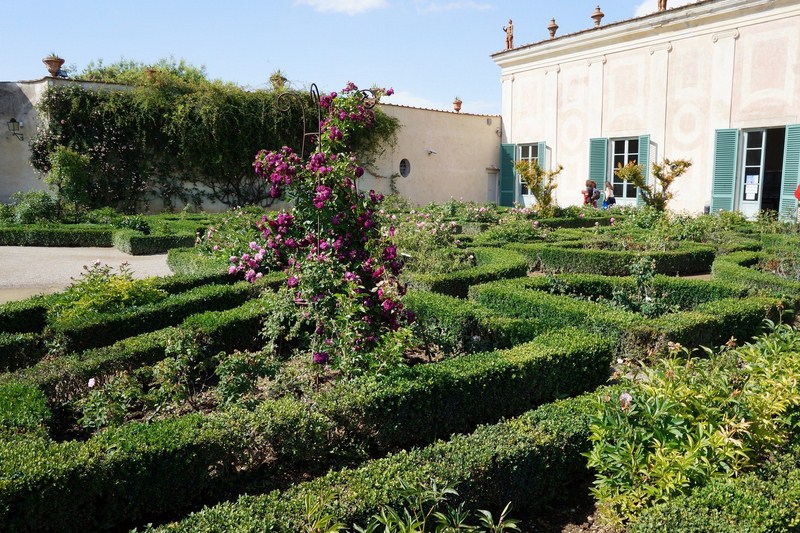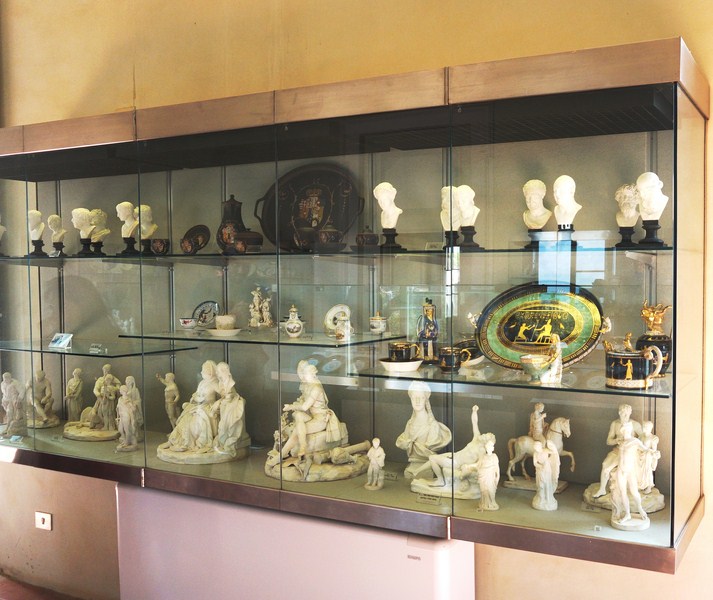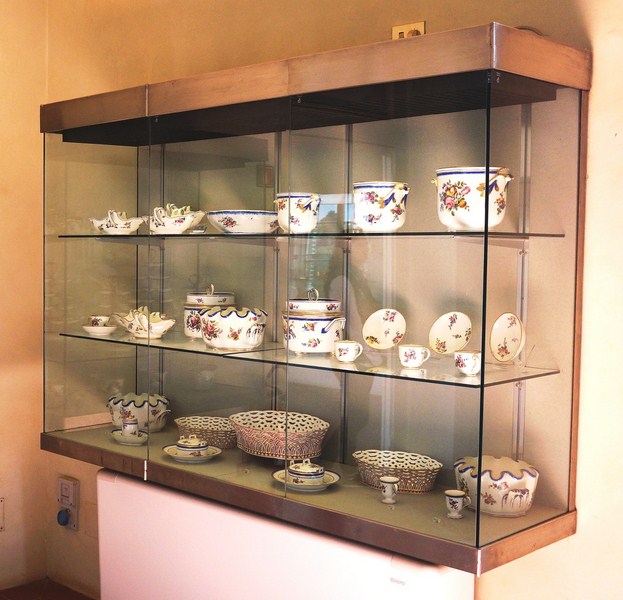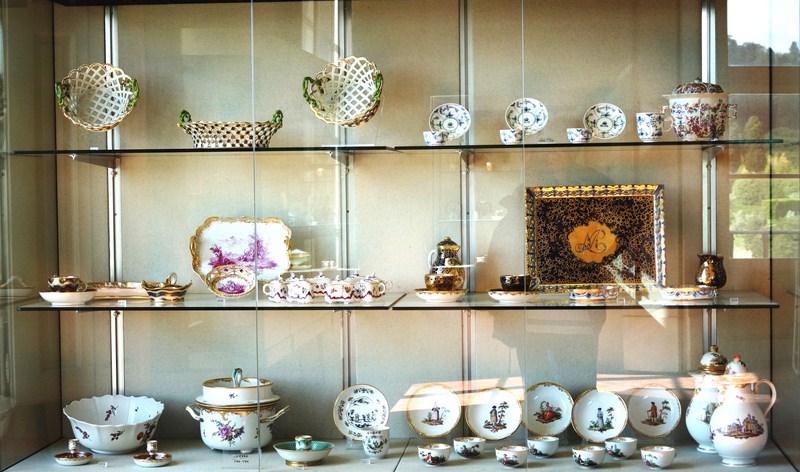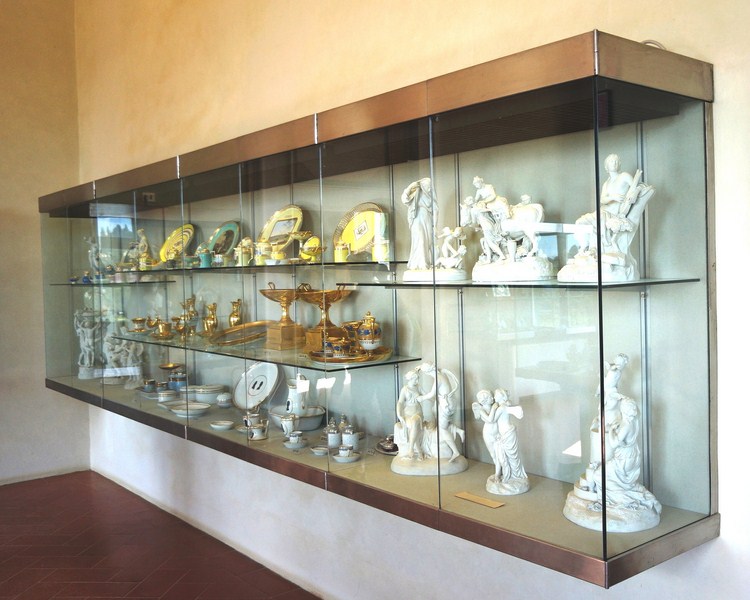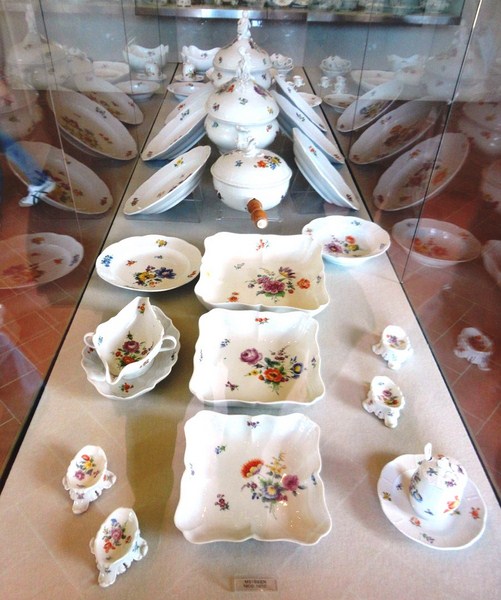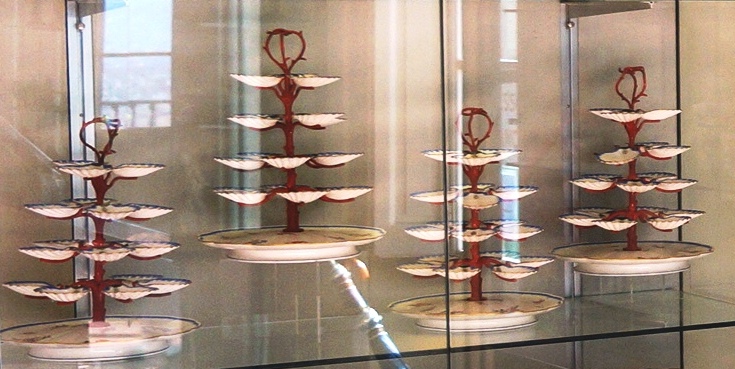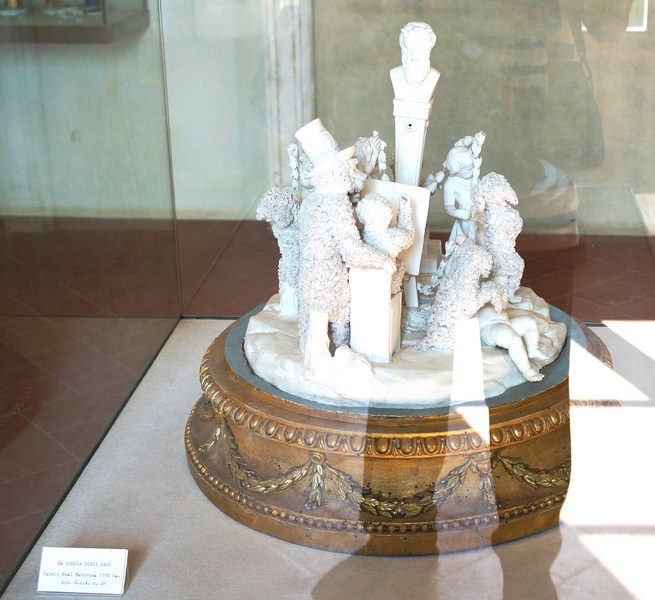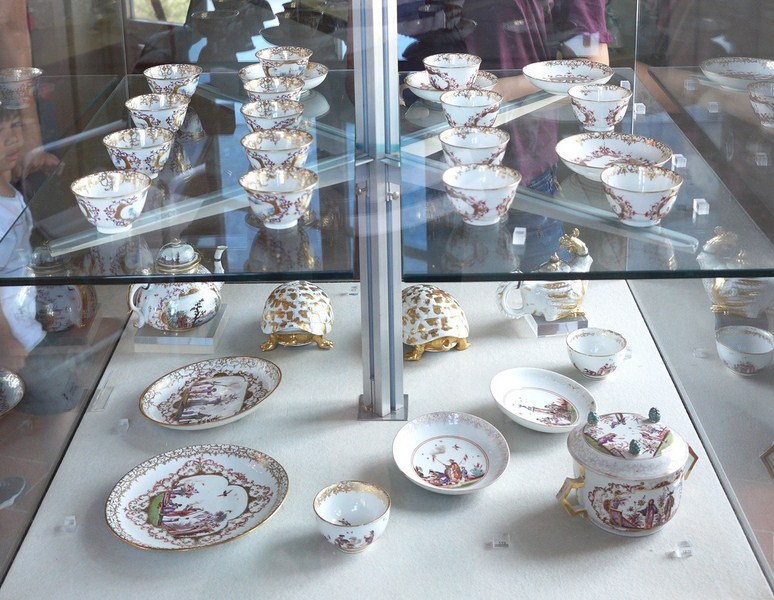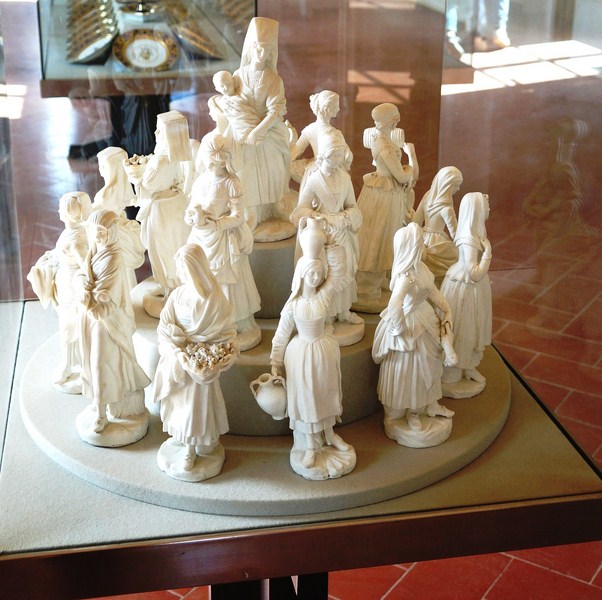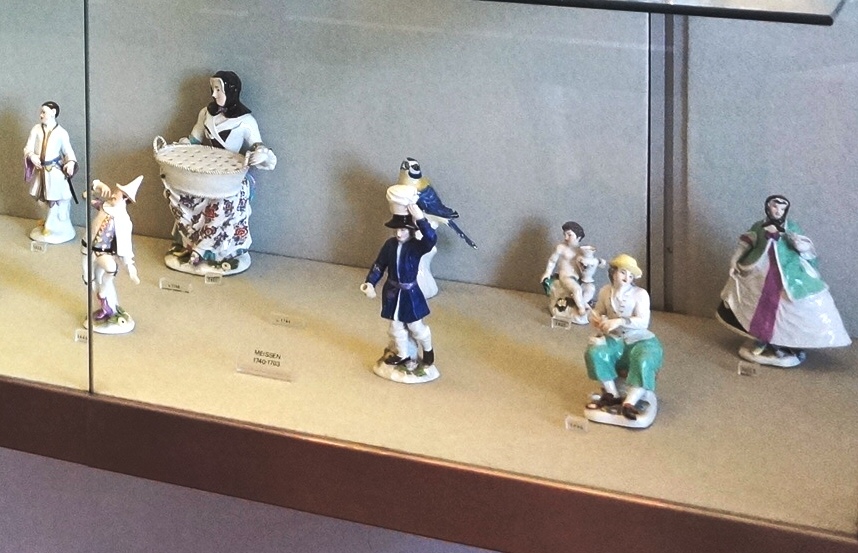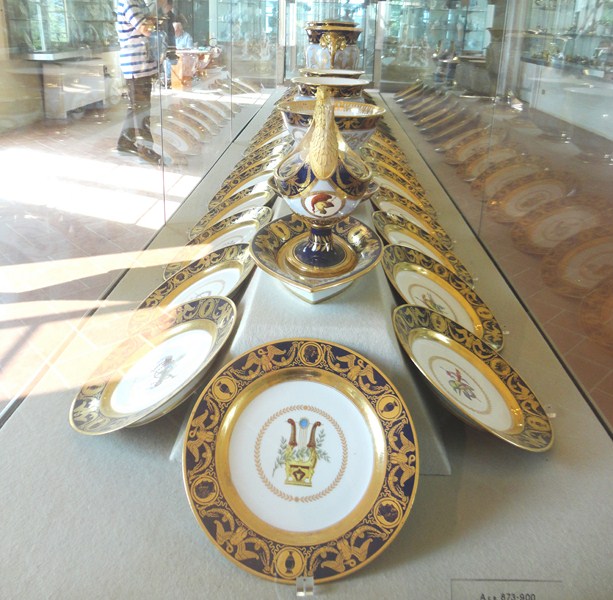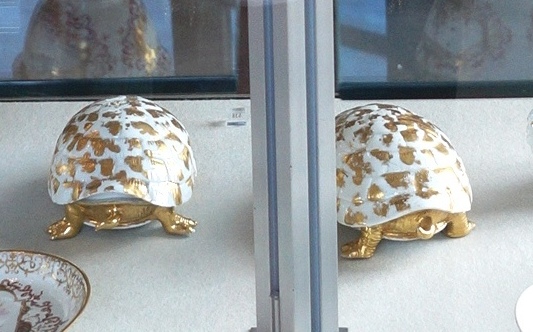First opened in October 1973, the Porcelain Museum (Museo delle Porcellane), a section of the Silver Museum, is an internationally acclaimed institution in the field of ceramics and among the hundred most visited art museums in the world.
It is housed in the Knight’s Building (Palazzina del Cavaliere) situated on the eponymous rampart (Bastione del Cavaliere) overlooking the Boboli Gardens. Originally constructed between 1527 and 1530, the current Neo-Classical building was built at the end of the 17th century by Grand Duke Cosimo III de’ Medici for his second-born son Giangastone.
Check out “Palazzo Pitti – Boboli Gardens“
If you love porcelain, then you will be impressed by its extensive collection of mainly continental porcelain, encompassing almost every famous maker. The labels were predominantly in Italian. As it is located on one of the highest points of the Boboli Gardens, you have a gorgeous panoramic view of the city of Florence from the terrace.
The over 2,000-piece, homogeneous collection comprises mainly porcelain tableware, from many of the most notable European porcelain factories, belonging to the royal families that ruled Tuscany and have followed one another at Pitti Palace, starting from the period of the Medici family, to the Lorraines (including the Parma-Bourbon dynasty), to the Savoys up to the unification of Italy. One of the most important historical collections of its kind in Europe, the oldest pieces are those that once belonged to Gian Gaston de Medici (the last Medici Grand Duke, 1671-1737) produced in the Manufactory of Meissen.
Among the well represented manufacturers of origin on display are the Royal Factory of Naples (Capodimonte); the Tuscan Carlo Ginori from Sesto Fiorentino; French manufacturers Vincennes (founded in 1740 and transferred to Sèvres in 1756 under the direct ownership of King Louis XV) in Paris; Viennese porcelain, largely collected by Ferdinand III of Tuscany; the German porcelain factory of Meissen, near Dresden.
Many items in the collection, divided into three sections by periods, nations (Austria, Germany and France) and manufacturers, were specially commissioned by the Grand Ducal court, clearly reflecting their tastes, with several outstanding examples of Italian porcelain objects produced in Doccia (near Florence, founded by the Ginori family in 1737) and at the Royal Manufactory of Naples. These were especially used by the Grand ducal family for large services of daily use. All are very detailed, elegant and fine works of arts.
Others were gifts to the Florentine rulers from other European sovereigns. They include fine table sets from Vienna and from the German Manufactory of Meisse. There were also French several large porcelain dinner services from the Vincennes (later renamed Sèvres) factory, brought to the Pitti Palace by the Savoy House from the Royal Palace of Parma.
Table services, for daily use, constantly supplied to the Grand Dukes of Lorraine, from Doccia Manifacture, include a flowered porcelain with bouquet or tulip motifs, taken from the so-called “famille rose” Chinese porcelain; and lovely coffee cups with view of Florentine piazzas, from the 1800’s, made using lithographs by the Frenchman Philippe Benoist as models.
Some typical examples of French porcelain, characterized by various pastel-colored shades, includes some flower vases with scenes taken from Francois Boucher as well as 4 oysters stands from Parma, singular and unique of their kind, made up of 18 shell-shaped bowls and belonging to Louise Elisabeth de Bourbon, the Grand Duchess of Parma, who was, in fact, the daughter of Louis XV, king of France. Sèvres table services for the light first course and dessert, in two central display cases, were gifts to Elisa Bonaparte Baciocchi (Grand Duchess of Tuscany, 1809-1814) from her august brother Emperor Napoleon I.
In the first room is a collection from the Real Fabbrica of Naples. They include, of particular note, a series of small biscuit figurines depicting personages from Classical antiquity; reproductions from the excavations in Herculaneum; 18 figurines reproducing ‘garments’ from the Kingdom of Naples, two dejeuner services (one decorated with Egyptian motifs and the other with Etruscan motifs).
A rich assembly of Viennese porcelains, in the second room, were brought to Pitti Palace by two Lorraine grand dukes – Peter Leopold (who maintained a constant rapport with the Vienna) and Ferdinand III of Lorraine (an impassioned collector of porcelains and, particularly, of ‘solitaire’ services). Cups and trays, decorated with views of Vienna, and a coffee service, with a trompe l’oeil feigned wood decoration, stand out.
Porcelains from Meissen and from other German manufacturers are in the third room. In the display case, towards the window, are 2 turtle-shaped butter dishes, a teapot in the shape of a rooster and a broth cup with scene inspired by a play by Molière, probably belonging to the collection of Gian Gastone de Medici.
Early pieces, from the Meissen factory, such as a splendid vase, are decorated with Chinese motifs such as gilded grape leaves and vines in relief. The Harlequin, a series of small porcelain statues taken from the Commedia dell’Arte, representing people in costume (ladies, musicians, putti, gardeners, etc.), was a source of inspiration for the Capodimonte porcelain manufacture in Naples.
Porcelain Museum: Palazzo Pitti, Piazza de’ Pitti, Florence, Italy. Tel: +39 055 238 8709

